Convalescent and Rest Homes
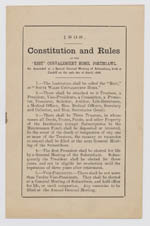
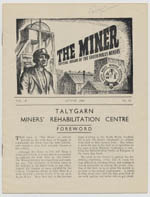
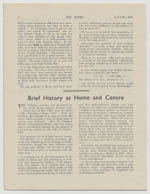
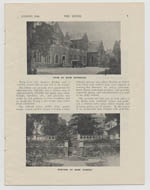
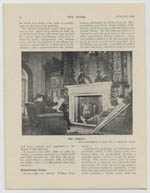
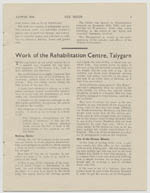
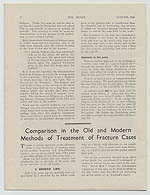
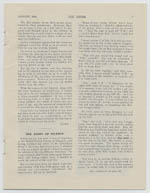
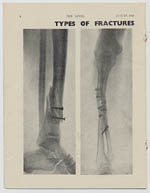
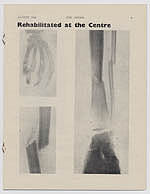
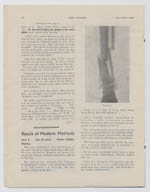
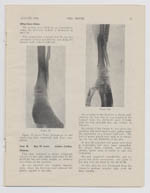
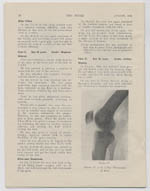
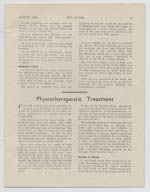
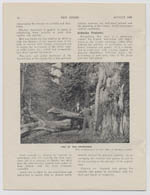
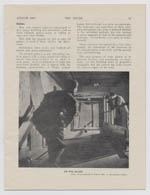
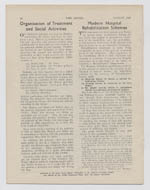
The Porthcawl Rest Home was a convalescent home for people recovering from accidents and illnesses. Entry to the ‘Rest’ could only be obtained by tickets supplied by a subscribing organisation, such as a trade union, welfare association, or Co-operative Society. Applicants could request tickets for themselves or their dependents (but not children), although entry was not guaranteed. They could also apply to other convalescent homes, including Southerndown, Talygarn, Weston-super-Mare, and The Miners’ Rest Home (Court Royal Hotel) in Bournemouth. The criteria for acceptance was based on convalescence and rest; people who were seriously ill, or had infectious diseases, would not gain entry. Residents of the convalescent homes usually stayed for a week or two, and were subject to strict rules regarding their daily routines and behaviour.
|
|
Hospitals

This photograph shows soldiers in an unidentified hospital, c.1914-1918. During the First World War, many hospitals were taken over to accommodate military casualties. In south Wales, the Cardiff Infirmary – founded by voluntary subscription as the Glamorgan and Monmouthshire Infirmary and Dispensary in 1837 - became headquarters to the 3rd Western General Military Hospital, overseeing all the other military hospitals in the region. In addition, some private houses and schools were converted into temporary hospital accommodation. Orthopaedic injuries were common during the War, and many patients needed to have limbs amputated. The Prince of Wales Hospital opened in Cardiff on 20th February 1918, specialising in the treatment and rehabilitation of soldiers with such injuries.
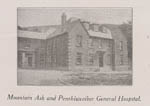
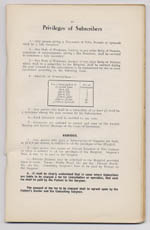
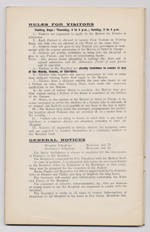
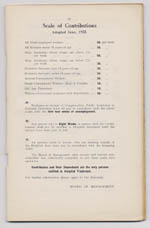
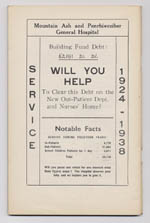
The Mountain Ash and Penrhiwceiber Hospital opened on 18th December 1924. Patients were transferred from the Cottage Hospital to this new and larger institution. Governors of the Hospital included representatives from local Collieries, Co-operative Societies, and Railwaymen. The Hospital relied on funding provided by private donations, workplace schemes, and members of welfare associations and Friendly Societies. Admission to the Hospital was by tickets which were distributed by subscribing organisations, on request by their members. The Hospital had an x-ray block, operating theatres, and an out-patients’ department. Surgeons from the Cardiff Infirmary worked at the Hospital, and Dr. Nathan Rocyn-Jones (previously Medical
Officer of Health for Monmouthshire) was appointed as orthopaedic surgeon in 1939. In the same year, on the 1st September, a “Clear the Hospital” Order was received regarding the national emergency, and all the patients were discharged. The Hospital was handed over to the National Health Service, on 5th July 1948.
|
|
|
Further Reading:
Borsay, Anne, Disability and Social Policy in Britain since 1750: A History of Exclusion (Basingstoke and New York: Palgrave MacMillan, 2005).
Brunton, Deborah, Medicine Transformed: Health, Disease and Society in Europe 1800-1930 (Manchester: Manchester University Press, 2004)
Cherry, Steven, Medical Services and the Hospitals in Britain 1860-1939 (Cambridge: Cambridge University Press, 1996)
Cooter, Roger, Surgery and Society in Peace and War: Orthopaedics and the Organization of Modern Medicine, 1880-1948 (Houndmills: Macmillan in association with the Centre for the History of Science, Technology, and Medicine, University of Manchester, 1993)
Hardy, Dr. Anne, Health and Medicine in Britain since 1860 (Basingstoke: Macmillan, 2000).
Pinker, Robert, English Hospital Statistics, 1861-1938 (London: Heinemann, 1966)
|
|





























